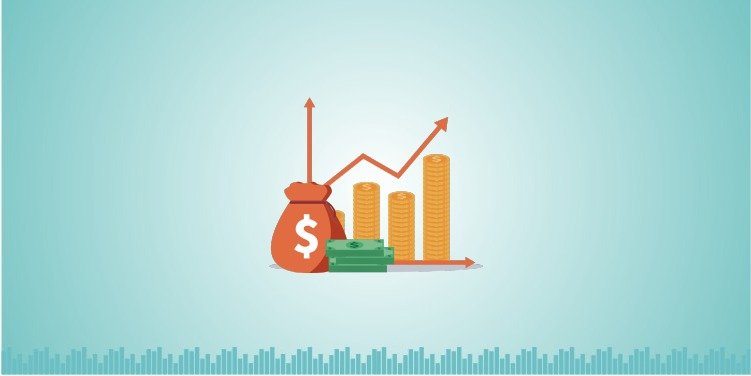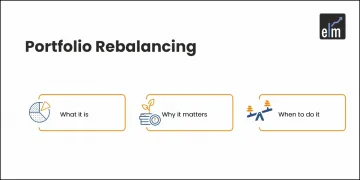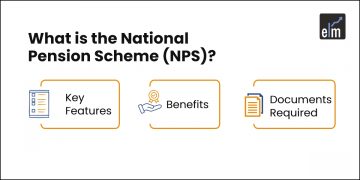“Mutual Fund Investments are subject to market risk, please read all the offer documents carefully before investing in it!”- How many times have you come across this statement? I guess there is no count to it. It’s there everywhere! While seeing advertisements of asset management companies or mutual funds, or on newspapers and television! All you see is this statement because everyone wants to be legally sound and this is the best way to tell you that mutual funds also come with terms and conditions.
Mutual funds and market risk go hand in hand but did it deter you from investing in it? Maybe or Maybe Not. The term “market risk” does scare many when thinking of investing in mutual funds. But who doesn’t want to get the most out of their idle money? If we build a good and well-diversified mutual fund portfolio then we can reduce this “market risk” factor.
Yes! You read it absolutely right. To reduce the “market risk” factor and generate greater returns you need to build a good mutual fund portfolio. How should we make a good mutual fund portfolio? Exactly, what we are going to talk about in this blog and help you build your future.
In this week’s blog, we shall discuss the 8 steps that will help you in building a good Mutual Fund portfolio.
How to build a good Mutual Fund Portfolio?
When we start building our mutual fund portfolio, various questions come to our mind such as what should be my investment horizon? In which fund should we invest? Etc, Etc..
Worry not! We will answer all these questions step by step:
Step 1- Deciding on your investment objective-
What is my investment objective? First of all, let us discuss the answer to this question of yours.
Before deciding to invest in mutual funds, you need to first determine:
- What are your long- or short-term financial goals?
- What is the duration for which you want to stay invested?
- What is your appetite to take risks?
On deciding your risk appetite, one should note that the extent to which you are ready to bear the risk will reflect on the returns.
Investing in mutual funds may range from short- to mid-to-long-term and thus it requires a thoughtful approach while selecting one.
Deciding what your investment objective is will help you in deciding the broad selection of mutual fund types.
After deciding your investment objective, whether it is short term or long term, we need to analyze when is the right time to invest in mutual funds?
Step 2- Analyzing the economic factors-
Is it the right time to start investing in mutual funds?
Secondly, we need to analyze what are the current macroeconomic factors i.e how the financial markets of our country are doing.
The economic factors that directly impact the financial markets, both nationally and globally, affect the portfolio, thus affecting the performance of the fund.
Various factors affect the economy which ranges from government decisions to industrial and also the market performances.
So, one should invest in mutual funds when the economy of the country is stable and growing, then only we can get good returns on our mutual fund portfolio.
After analyzing the economic factors, now we should decide our core and satellite strategy.
Step 3-Deciding on your core and satellite strategy-
What should be our core and satellite strategy when building our mutual fund portfolio?
Whether a house or a mutual funds portfolio, we always need a basic design i.e., a blueprint to initiate the process of building.
A popular and time-tested portfolio design is known as the Core and Satellite.
This type of portfolio structure is just like what it sounds i.e., you start with the “core” i.e., usually a large-cap stock fund representing the largest part of your portfolio.
Then around the core, we build our portfolio with “satellite” funds, which can be middle-cap or small-cap funds that represent the smaller parts of our portfolio.
After deciding the core and satellite strategy, we will come to the asset allocation part of our mutual fund portfolio.
Read more about Mutual Funds on ELM School
Step 4- Deciding on asset allocation-
Before we began, let me tell you that this is the most important part, when it comes to building our mutual fund portfolio.
“Don’t put all your eggs in the same basket”- this saga holds here also `when it comes to building our mutual fund portfolio.
You should note that a sensible portfolio construction must start with the right asset allocation.
The asset classes are in the form of equity funds, debt funds, hybrid funds and gold funds and your investment in these asset classes depend mainly on your investment horizon and liquidity requirements.
For example, a 60-year-old man with children who earn and have enough liquidity and investments that can take care of his retirement life can take higher exposure in equity funds than a 30-year-old man, who has just started saving for his home loan
- Equity funds: You can invest in equity funds if your long-term financial goal is more than 3 years as equities generally outperform other asset classes for a horizon of more than 3 years.
- Debt funds: As equities are volatile and they can even deliver negative returns in the short term, you can choose debt funds for short-term financial goals if you are not able to take the risk of losing your investment capital.
- Balanced funds: These funds are made up of both equities and debt instruments which deliver growth from its equity component and provide stability through its debt component when the market is down. You can Invest in them for your long-term goals and if you have a low-risk appetite and prefer stability over high returns.
- Gold Funds: These funds act as an alternative to investing in physical gold or gold ETFs. Other than capital appreciation, the main aim of investing in gold funds is to provide yourself with a hedge against inflation, global and domestic turmoil, and also fall in equity markets. Usually, your investment in gold funds should be around 5–10% of your mutual fund portfolio.
After deciding what per cent, you want to invest in a particular asset, we need to check the performance of the fund.
Step 5- Performance-
How has the fund performed in the last few years? It is time to answer this question.
The future potential of any fund is based on how consistent it is in generating returns in the past years and how the fund has managed to be still on the top, performing to beat the benchmark and market cycles.
One should check the fund’s three and five-year returns before concluding to its consistency.
You can check the performance of any fund with the help of StockEdge as shown below:
Step 6- Asset Under Management:
What is the AUM of the fund in which I am planning to invest?
Asset Under Management (AUM) refers to the fund size that shows the fund’s potential to generate returns. This is the reason why most investors are investing majorly in that particular fund rather than other funds.
The best-experienced fund managers usually manage these flagship mutual fund schemes with high assets under management.
As shown above, is the AUM of Nippon India Corp Bond Fund.
Step 7- Expense Ratio-
What is the expense ratio of the fund in which I am planning to invest in?
The expense ratio is an important factor to consider while choosing a fund as they are known to take away a major part of the returns that are generated by the scheme.
According to the industry standards, an expense ratio of 1.5% is good. The higher the AUM, the lesser will be the expense ratio.
As we can see from the above the expense ratio of the Nippon India Corp Bond Fund is 0.64% that is less as AUM is high of this fund.
Step 8- Exit Load-
What is the Exit Load of the fund in which I am planning to invest in?
The mutual fund schemes are also time-bound. If we want to withdraw early from the plan before the maturity period, then the investors are required to pay the exit load.
But in some schemes, there is no exit load like the Nippon India Corp Bond Fund which means you don’t have to pay the exit load if you want to withdraw early.
You can also join our course on MUTUAL FUND MADE EASY
Bottomline-
The above steps will help you in constructing your own mutual fund portfolio without the help of any financial planner. But if you do not have time to check the above parameters then you can definitely take the help of a financial planner! It’s your future and you need to build it now, either by yourself or with the help of a professional. We shall try our best to guide you along the way. But always remember: “Mutual Fund Investments are subject to market risk, please read all the offer documents carefully before investing in it!” 😉
We hope you enjoyed this blog on how to build a good Mutual Fund Portfolio. Show some love by sharing this blog and helping us in our mission of spreading financial literacy. Happy Investing!







Very good and highly knowledgeable write up. An invaluable lesson to a beginner.
Hi,
We really appreciated that you liked our blog.
Keep Reading!
Ok given valuable information
Hi,
We really appreciated that you liked our blog.
Keep Reading!
I read all the articles. I appreciate you and get more knowledge that’s helped me. Keep it up. Thank you so much for sharing this
Hi,
We really appreciated that you liked our blog.
Keep Reading!